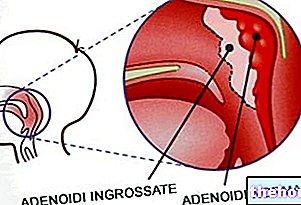Symptoms and complications
For further information: Pulmonary Hypertension Symptoms
In its early stages, pulmonary hypertension is often asymptomatic (ie, free from obvious signs and symptoms).

Figure: dyspnea (shortness of breath) is one of the typical symptoms of pulmonary hypertension
However, with the worsening of vasoconstriction in the pulmonary arteries, the first pathological manifestations begin to appear.
The main symptoms of pulmonary hypertension are:
- Dyspnea (or shortness of breath), both with exertion (exertional dyspnea) and at rest (dyspnea at rest)
- Dizziness
- Feeling of fainting and syncope
- Chest pain or pressure
- Edema in the legs, hips and, sometimes, even in the abdomen (ascites)
- Cyanosis
- Increased heart rate (tachycardia or palpitation)
- Sense of fatigue
WHEN TO SEE THE DOCTOR?
The appearance of an "unusual dyspnea during even minimal effort must induce the victim to contact their doctor immediately, for a deeper understanding of the situation. In addition, symptoms and signs such as chest pain, edema in various body parts and cyanosis.
COMPLICATIONS
In the long run, the condition of pulmonary hypertension can lead to the onset of the following complications:
- Pulmonary heart. It is a very serious heart disease, characterized, first, by an enlargement of the right ventricular cavity and, subsequently, by a thickening of the muscular wall that constitutes the right ventricle (right ventricular hypertrophy).
These alterations are the adaptive response to the narrowing of the pulmonary arteries and to the difficulties that the blood encounters in crossing them. - Tendency to the formation of clots inside the blood vessels that carry blood to the lungs. The thromboses that cause the most serious effects are those affecting the smaller branches of the pulmonary arteries, as they very easily occlude these vessels.
- Arrhythmias. As the condition of pulmonary hypertension worsens, tachycardia can become complicated with arrhythmias (ie alterations in the heart rhythm), which can even be fatal.
- Bleeding in the lungs. The characteristic sign is the "hemoptysis, that is the blood emitted with the cough.
- Heart failure (or heart failure). It is the pathological condition in which the heart is unable to effectively pump blood to all parts of the body. The classic symptoms include severe dyspnea even at rest and a sense of persistent fatigue.
Diagnosis
Pulmonary hypertension is difficult to diagnose because, even when symptomatic, it is very similar in symptoms and signs to other heart and lung diseases.
Therefore, in order to be able to highlight its presence, the doctor is required to subject the patient to various examinations and diagnostic tests.
Usually, after a careful physical examination, they follow:
- Blood tests
- Chest X-ray
- Echocardiogram
- Right heart catheterization
- Spirometry
- Pulmonary perfusion analysis
- CT scan
- Nuclear magnetic resonance
- Lung biopsy
The considerable number of diagnostic tests is due to the fact that the doctor, in addition to wanting to diagnose pulmonary hypertension, also needs to establish the precise causes of the latter. In fact, once the reasons for the disease have been identified, it is easier to plan an adequate treatment.
OBJECTIVE EXAMINATION
First of all, during the physical examination, the doctor visits the patient and asks him to describe the symptoms felt. Then, he moves on to the analysis of the clinical history (current state of health, pathologies suffered in the past, etc.) and lifestyle habits ( wants to know, for example, if the patient is a smoker, if he drinks alcohol, etc.).
BLOOD TESTS
Obtained with a simple withdrawal, the patient's blood sample could have values related to pulmonary hypertension because they are dependent on other associated morbid conditions (this is the case, for example, of systemic lupus erythematosus).
However, it must be remembered that blood tests are a non-specific diagnostic method and require further confirmation.
CHEST X-RAY
Chest x-ray provides a fairly clear picture of the heart, pulmonary arteries, lungs, and any abnormalities thereof.
However, it has been noted that a large proportion of patients with pulmonary hypertension (about 1/3) are completely normal on this test.
ECHOCARDIOGRAM
The Doppler echocardiogram is an ultrasound examination that shows in detail the appearance of the heart, any anomalies of the latter and the dynamics of blood flow through the atria, ventricles and heart valves. It allows, in fact, to identify the valve defects, the difficulties pumping of the heart and myocardial malformations (including dilations of the heart cavities and thickening of the walls).
The echocardiogram is a simple and non-invasive examination, which involves the use of an ultrasound probe (transducer) placed on the patient's chest.


-quando-preoccuparsi.jpg)

























